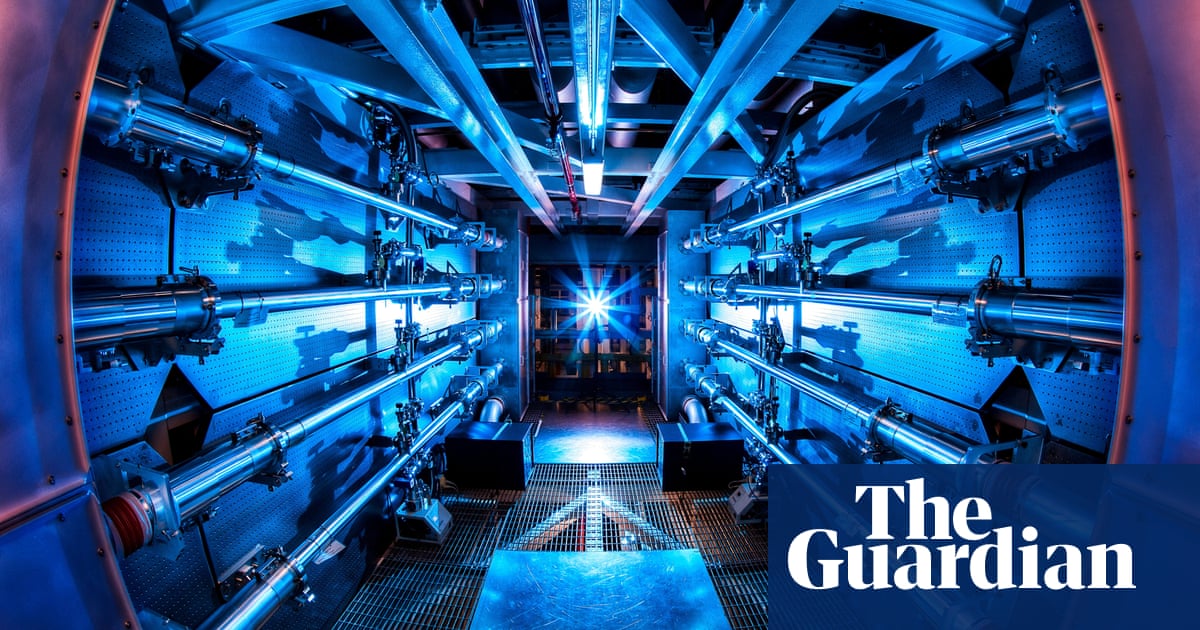You matter. If You Don’t Matter You Energy.
Sorry, I’m totally stealing that one.
Never trust an atom. They make up everything.
You guys are giving me so much material to make my family roll their eyes at the next get together, I love it!
Can anyone explain this pun? I don’t get it.
Einstein’s most famous equation relates mass and energy: E=mc^2 . So, if you’re not matter (mass), you’re energy. Which, by the way, is how we make energy in fusion reactions, converting mass to energy.
Ahh so that’s what it means. I was trying to think of what sounds like “energy” and could also fit in this sentence.
Fission too. I personally have both mass (more than I want) and energy (Not as much as I would like).
This is the best summary I could come up with:
US scientists have achieved net energy gain in a nuclear fusion reaction for the second time since a historic breakthrough in December last year in the quest to find a near-limitless, safe and clean source of energy
Scientists at the California-based Lawrence Livermore National Laboratory repeated the breakthrough in an experiment in the National Ignition Facility (NIF) on 30 July that produced a higher energy yield than in December, a Lawrence Livermore spokesperson said.
The approach, which gives rise to the heat and light of the sun and other stars, has been hailed as having huge potential as a sustainable, low-carbon energy source.
In December, Lawrence Livermore first achieved a net energy gain in a fusion experiment using lasers.
The Energy Department called it “a major scientific breakthrough decades in the making that will pave the way for advancements in national defense and the future of clean power.”
Fusion energy raises the prospect of plentiful clean power: the reactions release no greenhouse gases or radioactive waste byproducts.
I’m a bot and I’m open source!
It may only be two atoms, but it’s yet another tiny step in the right direction. It may still be generations before fusion is a scalable and reliable power source, but at this point I think we’ve proved it isn’t impossible.
The energy released was orders of magnitudes greater than that which would have been released by only fusing two atoms, so I strongly suspect that this is just poor wording and/or misunderstanding by the news agency and that what was really meant was that the lasers fused pairs of atoms.
Maybe I’m just over-hopeful, but I think “generations” is far too much of an over
understatement. With the way that technology moves, I don’t think we’ll be waiting that long.I think we will keep accelerating, but Fusion has taken so, so long to get to where we are now, every advancement has been met with a setback, and we still only have a few parts of it working on small scales.
The ones to watch for the next few years are ITER and CFETR for large scale tokamak style reactors, as well as SPARC for a much more compact solution that looks very promising as it can be built faster and cheaper. I don’t really see inertial confinement or pinch reactors being the way forward for power generation, but you never know.
deleted by creator
Generations are generally ~20 years. It’s been 3-4 generations since the first nuclear power plant, and less since the first commercial one. It’ll certainly be at least one more before commercial fusion even being optimistic
The problem is that fusion research does not tend to receive a lot of funding, especially relative to the huge challenges it presents. Even the National Ignition Facility, where this milestone was reached, was only built because it was needed for nuclear weapons research, with advances into using fusion for energy generation being essentially a side benefit (at least, from the perspective of its government funders).
Why do people keep saying the NIF experiment was a net gain? People focus on the laser input at the end of the line, which was 20MJ and produced 25MJ. But the input power to charge the capacitors was 422MJ.
The whole experiment produced 5% of what was put in.
In theory, the charging cost only needs to be spent on ignition.
Isn’t it a very old laser? Modern ones are way more efficient. They’re just doing research.
So, how long was this reaction? “Brief moment” is not very detailed. At the Wendelstein 7-X reactor, they can keep up a fusion reaction for around 8 minutes without anything overheating.
Beyond just trying to maintain a reaction, we’ll need a design that allows for the extraction of working energy. At present, all designs require tons of additional energy to keep them cool. We’re very far from any design that is power positive in a real sense. Any time you ask one of the fusion fanboys about this there’s a lot of hand waving, but I’ve never seen any actual proposals to extract working heat from the reactor. Any designs that require supercooling are especially problematic. It’s really difficult to extract heat capable of turning a turbine through the supercooled magnetic containment.
Fusion will happen, but not before a whole lot more money and time (in decades) disappears into the money pit.
I’m not sure if the time scale would be measurable. Nanoseconds at most. But the relevant part is that it’s ignition.
A device to harness inertial confinement fusion would work very very differently to a magnetic confinement one if that were the goal here (it’s not, it’s a weapons research facility). Essentially heating something up a lot in milliseconds and then extracting the heat over hours to months.
Fusion is now 20 years away instead of 20 years.
Its just proof that its making progress.
I’ve been so excited for this! Every day we’re getting closer to such a massive achievement. I remember having to learn a teensy bit about radiation in school. To this day it’s still magic to me.
Do it. I’m ready for free electricity bills.
Hmm, yeah, but we’d earn WAYYYYYYYY more money if you did pay for this free energy so…
Yup, me too lol. That’s unfortunately the way she’ll go. It’s just routine now.











